Browning Citori 725 Field 28" 20 Gauge Shotgun 3" Over/Under – 181656004 For Sale
$2,499.99
The Browning Citori 725 Field 28″ 20 Gauge Shotgun embodies the pinnacle of balance, form, and excellence distinctive of the Citori line, paying homage to John M. Browning’s iconic B25 Superposed. The 2020 edition introduces a modern low-profile receiver, surpassing the traditional 12-gauge models with its lower profile while retaining robust durability and trusted mechanics. It offers shooters a “one with the gun” experience, enhanced by the mechanical FireLite Trigger for a more responsive feel and the Inflex Technology recoil pad for comfort. The Invector-DS choke system ensures superior patterns and consistency, making it ideal for both field use and sporting clays. Aesthetically, it features a gloss oil finish on grade II/III checkered walnut and updated engraving on the steel receiver. The Citori 725 Field is a distinguished choice for those seeking unmatched craftsmanship and performance.
What is the difference between Citori and Citori 725?
The primary differences between the Browning Citori and the Citori 725 revolve around design enhancements and technology updates:
1. **Receiver Design and Weight**: The Citori 725 features a low-profile receiver that is slimmer and lighter compared to the traditional Citori, contributing to improved handling and a better feel during shooting.
2. **Trigger System**: The Citori 725 is equipped with Browning’s Fire Lite Mechanical Trigger, known for offering a lighter and crisper pull. This is an improvement over the standard trigger system found in the original Citori models.
3. **Barrel Technology**: The Citori 725 uses the Invector-DS choke system, which provides better shot pattern performance and consistency. The original Citori models typically use the Invector or Invector-Plus choke systems.
4. **Recoil Management**: The Citori 725 incorporates Browning’s Inflex II Recoil Pad, designed to efficiently absorb and redirect recoil away from the shooter’s face, enhancing comfort during shooting sessions.
5. **Aesthetic and Ergonomic Upgrades**: While both lines offer high-quality finishes and wood, the Citori 725 often includes upgraded features or options in terms of wood quality and engraving.
Overall, the Citori 725 is an evolution of the original Citori line, incorporating advanced features for improved performance and comfort.
Is the Browning Citori 725 a good gun?
The Browning Citori 725 is generally considered a good shotgun by many enthusiasts and experts. It is known for its quality craftsmanship, reliability, and performance. It’s designed with features like a low-profile receiver, mechanical trigger, and a comfortable stock, making it suitable for various shooting activities such as hunting and clay shooting. However, whether it is a “good” gun can depend on personal preferences and intended use, so it’s important to handle and shoot one if possible to determine if it’s the right fit for you.
Is the Browning Citori worth the money?
The Browning Citori is often considered worth the money for those seeking a reliable, well-crafted over-and-under shotgun. Known for its durability, balance, and smooth operation, it is favored by many hunting and sport shooting enthusiasts. Its quality craftsmanship and brand reputation contribute to its value, though the high price may make it more suitable for serious shooters rather than beginners. Ultimately, whether it’s worth the investment depends on individual needs and budget.
What are the grade levels of Browning Citori?
The Browning Citori is a popular over-and-under shotgun known for its quality and craftsmanship. It comes in various grade levels, which primarily differ in terms of materials, finishes, and engraving. Common grade levels include:
1. **Grade I**: This is the standard model with simpler wood and finish.
2. **Grade II/III**: These models offer better wood and some engraving.
3. **Grade IV/V**: These generally have more detailed engraving and higher-quality wood.
4. **Grade VI (or similar high grades)**: These feature extensive engraving, gold inlays, and premium wood.
Higher grades usually mean more elaborate hand-carving and artistry, along with potential performance enhancements. Specific grade names and availability might vary by model year and market.
When did the Citori 725 come out?
The Browning Citori 725 was introduced in 2012.
What is the difference between Browning 725 and 825?
The Browning 725 and 825 are both over-under shotguns, but they are generally intended for different markets and purposes. Here are the key differences:
1. **Target Market**:
– **Browning 725**: This model is primarily aimed at the American market. It is part of Browning’s well-known Citori line, which is popular in the United States for hunting and sporting purposes.
– **Browning 825**: This model is marketed towards the European and Asian markets. It may have features or configurations that are more appealing or suitable for these regions, potentially including variations in aesthetics, weight, and balance.
2. **Design and Features**:
– While both models share some core design elements, like the low-profile receiver and mechanical trigger, specific design tweaks or finishes can vary depending on regional preferences.
– There might also be differences in stock dimensions, recoil pad options, or specific engravings and finishes.
3. **Availability**:
– The availability of each model can differ significantly depending on the region due to distribution strategies and market demand.
4. **Finish and Customization**:
– Regional versions, like the 825 intended for Europe/Asia, might offer different wood grades, engraving patterns, or customizable options that better fit the tastes in those areas.
Overall, while both models share a foundational design, the actual differences often lie in market-specific adaptations and cosmetic variations that cater to different regional preferences.
How much does a Browning Citori cost?
The cost of a Browning Citori can vary widely based on the model, grade, and condition (new or used). As of the latest data, prices typically range from around $1,500 to over $4,000. Limited edition or high-grade models may cost even more. For the most accurate pricing, it’s best to check with authorized dealers or retailers.
Does Browning 725 have mechanical trigger?
Yes, the Browning 725 shotgun is equipped with mechanical triggers.
Does Browning Citori have ejectors?
Yes, the Browning Citori shotgun is equipped with ejectors.
How long will a Browning Citori last?
The longevity of a Browning Citori shotgun largely depends on how well it is maintained, how frequently it is used, and the conditions in which it is stored. With proper care and regular maintenance, a Browning Citori can last for several decades or even a lifetime. Many owners report their shotguns remaining in excellent working condition after tens of thousands of rounds. Regular cleaning, proper storage to prevent rust and corrosion, and occasional professional inspections can greatly extend the lifespan of the firearm.
What is the difference between Browning Citori grade 1 and 2?
The primary differences between the Browning Citori Grade 1 and Grade 2 shotguns usually involve the level of engraving, wood quality, and overall finish.
1. **Engraving and Aesthetics**:
– **Grade 1**: Typically has minimal or simpler engraving on the metal components.
– **Grade 2**: Features more elaborate and detailed engravings, offering a higher level of artistic craftsmanship.
2. **Wood Quality**:
– **Grade 1**: Made with standard walnut, which may have a simpler grain pattern.
– **Grade 2**: Utilizes higher-grade walnut with more intricate and appealing grain patterns, enhancing the visual appeal of the shotgun.
3. **Finish and Overall Attention to Detail**:
– **Grade 1**: Usually has a standard finish with practical yet less ornate detailing.
– **Grade 2**: Often boasts a superior finish with additional attention to detailing for a more luxurious appearance.
These differences primarily impact the aesthetics and the price point rather than the basic functionality and performance of the shotguns.
Who makes Browning shotguns now?
Browning shotguns are currently manufactured by the Browning Arms Company, which is a part of the Herstal Group. The Herstal Group is a Belgian company that also owns FN Herstal and Winchester Repeating Arms.
What is the difference between Browning Citori grade 1 and grade 2?
The primary differences between Browning Citori Grade 1 and Grade 2 shotguns lie in their aesthetic details and finishes.
1. **Finish and Wood Quality**:
– **Grade 1**: Typically features a more basic finish and utilizes standard-grade walnut wood for the stock and forearm.
– **Grade 2**: Often includes upgraded wood quality, generally a higher grade of walnut, with more elaborate and attractive grain patterns.
2. **Engraving and Metalwork**:
– **Grade 1**: Engraving is usually simple or minimal, with a focus on functionality over decoration.
– **Grade 2**: Features more intricate or extensive engraving on the receiver and metal parts, adding aesthetic appeal.
3. **Overall Appearance**:
– **Grade 1**: Has a more utilitarian appearance, suitable for those prioritizing function.
– **Grade 2**: Offers a more refined and enhanced visual appearance, appealing to collectors or those who appreciate fine craftsmanship.
These upgrades in Grade 2 generally make it more expensive than Grade 1, reflecting the enhanced materials and craftsmanship.
What is the difference between 525 and 725?
The difference between 525 and 725 is 200.
What is the difference between 725 and 625?
The difference between 725 and 625 is 100.
| Product Line | Citori 725 Field |
|---|---|
| Action | Over/Under |
| Trigger Type | Triple |
| Sights | Ivory Bead Front |
| Barrel Material | Steel |
| Receiver Material | Steel |
| Stock Material | Black Walnut |
| Barrel Finish | Polished Blue |
| Receiver Finish | Silver Nitride |
| Stock Finish | Gloss Oil |
| Chamber Length | 3" |
| Length of Pull | 14-1/4" |
| Overall Length | 45-3/4" |
| Checkering | Cut 20 LPI |
| Chamber Finish | Chrome Plated |
| Recoil Pad | Inflex 2, Large |
| Trigger Finish | Gold Plated |
| Trigger Guard Engraving | Buck Mark in Gold |
| Trigger Guard Finish | Silver Nitride |
| Trigger Guard Material | Steel |
| Trigger Material | Alloy |
| Choke System | Invector-DS Flush |
| Chokes | Full, Modified, Improved Cylinder |
| Drop at Comb | 1-1/2" |
| Drop at Heel | 2-3/8" |
| Rib Width | 1/4" |
| Wood Grade | Grade II/III |
| Barrel Type | Vent Rib |
| Hand Orientation | Right |
Be the first to review “Browning Citori 725 Field 28" 20 Gauge Shotgun 3" Over/Under – 181656004” Cancel reply
Related products
Browning Citori 725 Field
Browning Citori 725 Field 20 Gauge Over/Under-Action Shotgun, Gloss Oil – 0135306005
Browning Citori 725 Field
Browning Citori 725 Field 28" 12 Gauge Shotgun 3" Over/Under – 181653004
Browning Citori 725 Field
Browning Citori 725 Field 26" 12ga Walnut Stock Shotgun 0135303005
Browning Citori 725 Field
Browning Citori 725 Field 410 Gauge Over/Under-Action Shotgun, Gloss Oil – 013530914
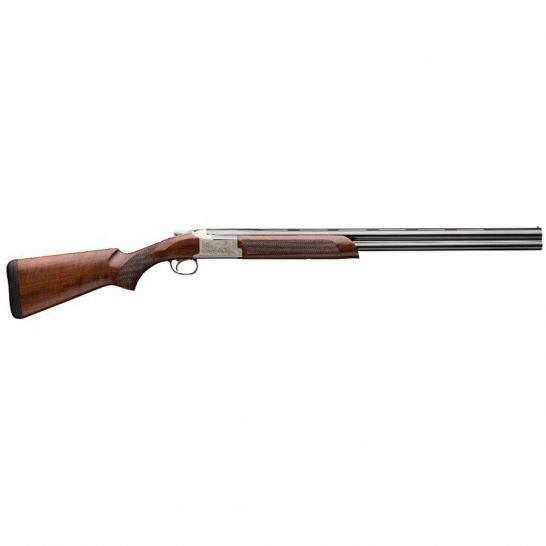
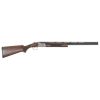
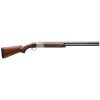
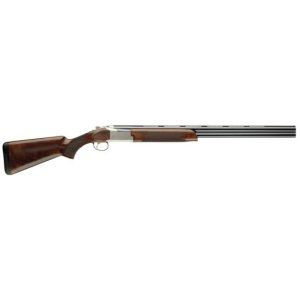
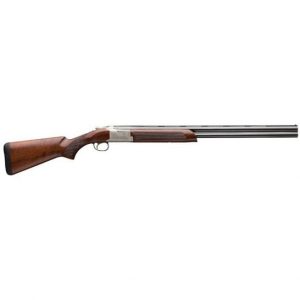
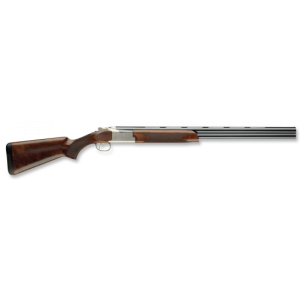
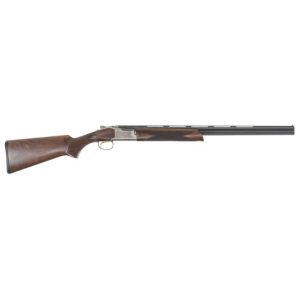
Reviews
There are no reviews yet.